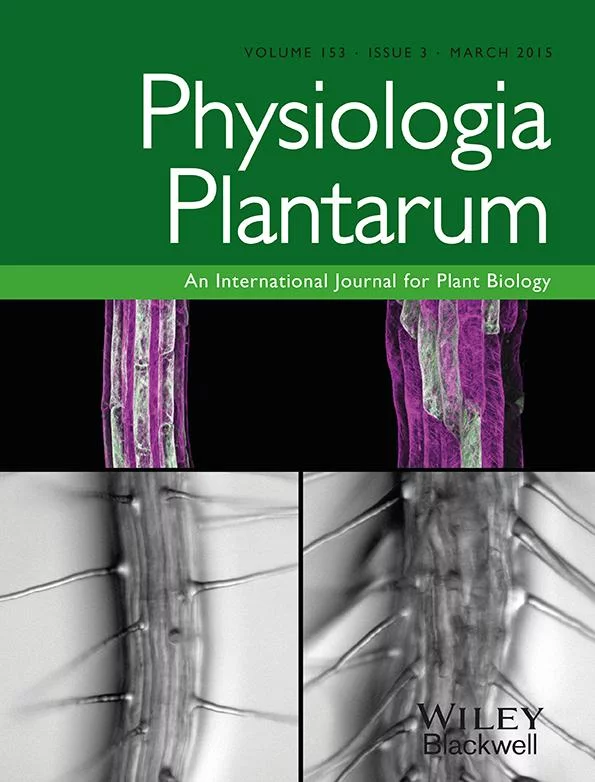Ver ítem
- xmlui.general.dspace_homeCentros Regionales y EEAsCentro Regional Entre RíosEEA ConcordiaArtículos científicosxmlui.ArtifactBrowser.ItemViewer.trail
- Inicio
- Centros Regionales y EEAs
- Centro Regional Entre Ríos
- EEA Concordia
- Artículos científicos
- Ver ítem
Proteomic and metabolomic profiling of Valencia orange fruit after natural frost exposure
Resumen
The aim of this study was to evaluate the response of orange fruit (Citrus sinensis var. Valencia Late) to freezing stress in planta, both immediately after the natural event and after a week, in order to understand the biochemical and molecular basis of the changes that later derive in internal and external damage symptoms. Using two‐dimensional differential gel electrophoresis to analyze exposed and non‐exposed fruit, 27 differential protein spots were
[ver mas...]
The aim of this study was to evaluate the response of orange fruit (Citrus sinensis var. Valencia Late) to freezing stress in planta, both immediately after the natural event and after a week, in order to understand the biochemical and molecular basis of the changes that later derive in internal and external damage symptoms. Using two‐dimensional differential gel electrophoresis to analyze exposed and non‐exposed fruit, 27 differential protein spots were detected in juice sacs and flavedo, among all comparisons made. Also, primary and secondary metabolites relative contents were analyzed in both tissues by gas chromatography‐mass spectrometry and liquid chromatography‐mass spectrometry, respectively. Proteins and compounds involved in regulatory functions, iron metabolism, oxidative damage and carbohydrate metabolism were the most affected. Interestingly, three glycolytic enzymes were induced by cold, and there was an increase in fermentation products (volatiles); all of that suggests that more energy generation might be required from glycolysis to counter the cold stress. Moreover, a notable increase in sugar levels was observed after frost, but it was not at the expense of organic acids utilization. Consequently, these results suggest a probable redistribution of photoassimilates in the frost‐exposed plants, tending to restore the homeostasis altered by that severe type of stress. Isosinensetin was the most cold‐sensitive secondary metabolite because it could not be detected at all after the frost, constituting a possible tool to early diagnose freezing damage.
[Cerrar]

Autor
Perotti, Valeria Elisa;
Moreno, Alejandra Soledad;
Tripodi, Karina Eva Josefina;
Meier, Guillermo Enrique;
Bello, Fernando;
Cocco, Mariángeles;
Vazquez, Daniel Eduardo;
Anderson, Catalina Margarita;
Podesta, Florencio Esteban;
Fuente
Physiologia Plantarum 153 (3) : 337-354 (March 2015)
Fecha
2015-03
Editorial
Wiley
ISSN
0031-9317
1399-3054
1399-3054
Formato
pdf
Tipo de documento
artículo
Palabras Claves
Derechos de acceso
Restringido
 Excepto donde se diga explicitamente, este item se publica bajo la siguiente descripción: Creative Commons Attribution-NonCommercial-ShareAlike 2.5 Unported (CC BY-NC-SA 2.5)
Excepto donde se diga explicitamente, este item se publica bajo la siguiente descripción: Creative Commons Attribution-NonCommercial-ShareAlike 2.5 Unported (CC BY-NC-SA 2.5)

